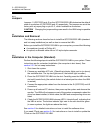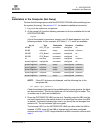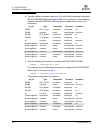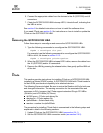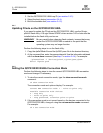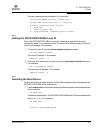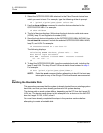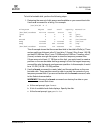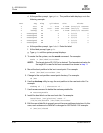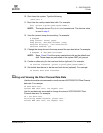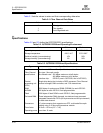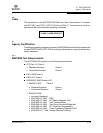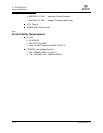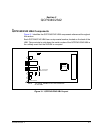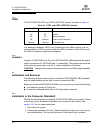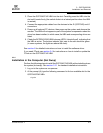
2 – QCP2330/2332
FCode
2-10 CF2351102-00 F
Q
d. At the partition prompt, type print. The partition table displays, as in the
following example.
e. At the partition prompt, type label. Enter the label.
f. At the label prompt, type quit.
g. Type quit until the system prompt displays.
3. To create the file system, use the newfs command. For example:
newfs -v /dev/rdsk/c3t130d0s0
NOTE: The target device ID (t130) is in decimal. The hexadecimal value for
the target ID is used in the boot command line shown in step 11.
4. Mount the boot partition to the /mnt mount point. For example:
mount /dev/dsk/c3t130d0s0 /mnt
5. Change to the root partition mount point directory. For example:
cd /mnt
6. Use the ufsdump utility to copy the root partition to the new book disk. For
example:
ufsdump 0f - / | ufsrestore rf -
7. Use the rm command to delete the restoresymtable file:
rm restoresymtable
8. Install the boot block on the new boot disk. For example:
installboot /usr/platform/`uname -i`
/lib/fs/ufs/bootblk /dev/rdsk/c3t130d0s0
9. Edit the new vfstab file to properly mount the new partitions during boot. In this
case, each reference to c0t0d0s0 is changed to c3t130d0s0. For example:
vi /mnt/etc/vfstab
Part
0
1
2
3
4
5
6
7
Tag
root
swap
backup
unassigned
unassigned
unassigned
unassigned
unassigned
Flag
wm
wu
wu
wm
wm
wm
wm
wm
Cylinders
0 - 8738
8739 - 9188
0 - 9201
0
0
0
0
0
Size
4.00GB
210.94MB
4.21GB
0
0
0
0
0
Blocks
(8739/0/0) 8389440
(450/0/0) 432000
(9202/0/0) 8833920
(0/0/0) 0
(0/0/0) 0
(0/0/0) 0
(0/0/0) 0
(0/0/0) 0



